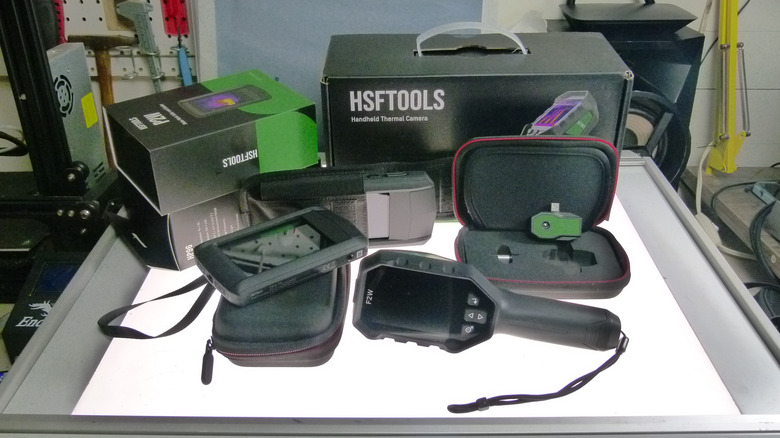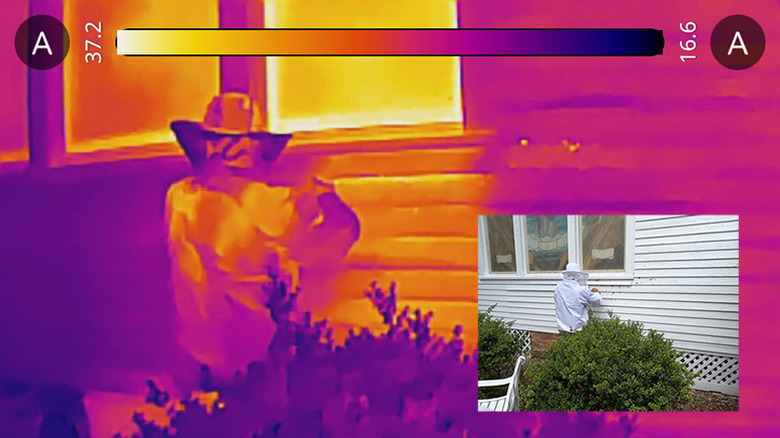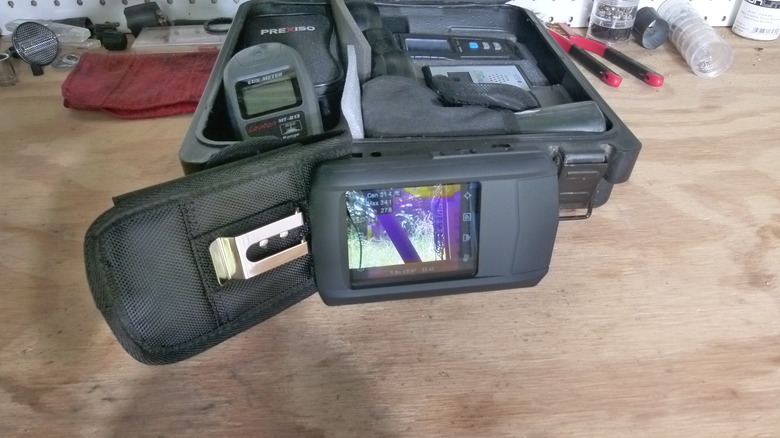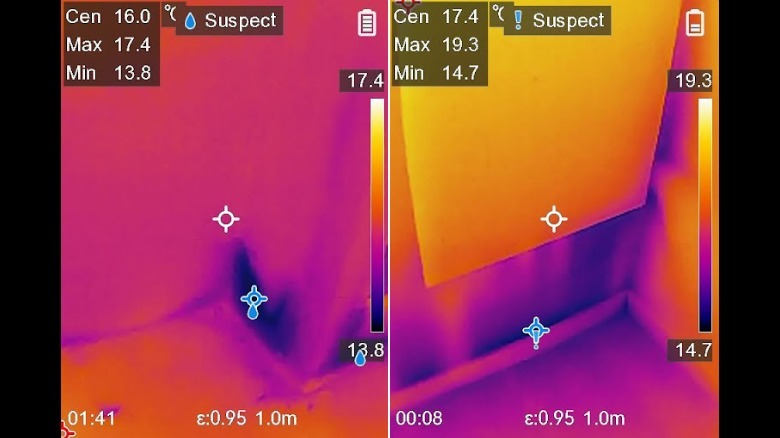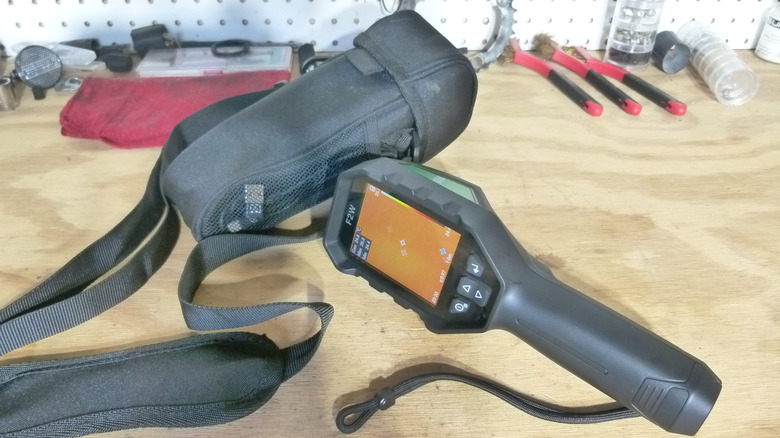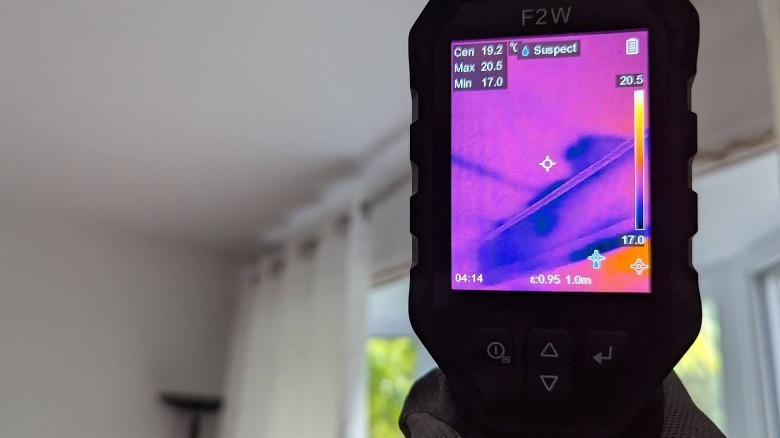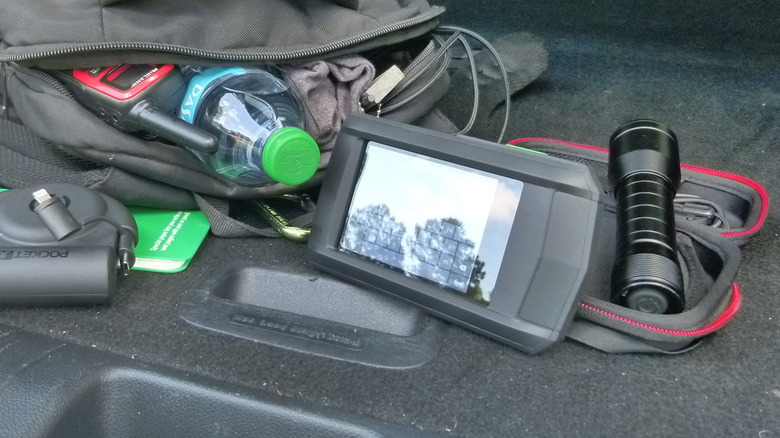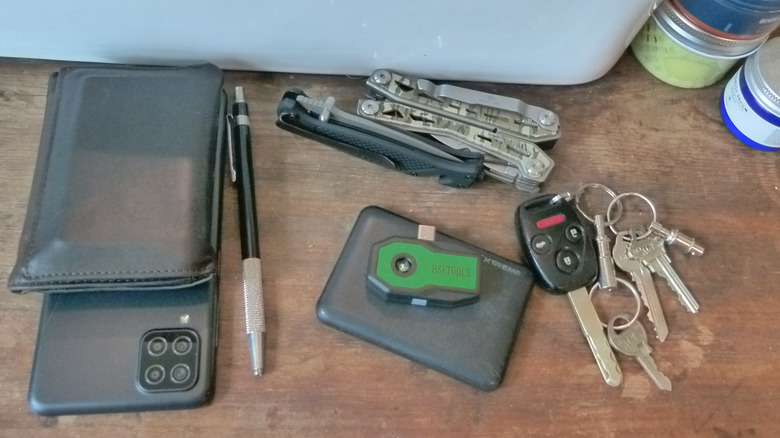A Thermal Camera From HSFTOOLS Is The Gadget You Need This Prime Day. I've Been Testing Them, And Here's What I Discovered
Sponsored Content. We may receive a commission on purchases made from links.
You can live with things for a long time and never see them, especially when it comes to issues like water leaks, insulation voids, or electrical concerns around your home, your RV, or your vehicle. I want to know what's going on beyond my vision, and in a thousand ways that's what thermal imaging cameras do best. They give you the power to inspect your surroundings and detect hidden dangers in advance, so you can tackle the problem effectively and save money in the long run. My go-to thermal imaging devices of choice for some time have been HSFTools cameras. I especially like the brand's Intellfault function, which automatically diagnoses two common problems in home inspections — water leaks and insulation — giving novice users the same kind of information the pros use. (This function is not supported by some models, such as Finder S2, Finder S1 and HF256.)
Amazon Prime Day — actually Prime Most-of-a-Week — runs from July 8-11, 2025, and one of the things I'm most excited about is the deep discounts on the HSFTools thermal imaging cameras. Prime Day will feature up to 32% off on HSFTools cameras. That's about a third off of pro-quality thermal cameras in a lot of different form factors and with a lot of different capabilities. If you've been looking for unbeatable prices on these wildly useful things, this seems to be your moment. And if you've been looking for a good reason to buy a thermal camera, bear with me. I have lots.
Why do you need a thermal camera, anyway?
Thermal cameras are useful to stash in a toolbox for construction issues, of course, but even if you're not in the habit of thinking much about construction, you probably are in the habit of thinking about power bills and the cost of home repairs. Thermal cameras can help you spot door leaks, or energy loss from insulation problems and unsealed ductwork. They'll show you leaky plumbing electrical circuit hotspots in a breaker box. Tradespeople use them for things like measuring the temperature of an HVAC's output or temperature anomalies in compressors or condensers, checking the integrity of newly installed plumbing, or looking for hotspots in a car's engine bay or a circuit board.
The 96 series, particularly the HP96, is a versatile all-around device
For most everyday purposes — tracking a lost cat, say, or trying to figure out where a drafty window is leaking — HSFTools' 96 series of thermal cameras (presumably named after the 96x96 resolution of their infrared sensors) is perfect. This is where I got started, too, and they're surprisingly good. Take the HP96 rechargeable pocket thermal camera, for example. This thing has a 3.5-inch touchscreen that displays both of the device's cameras (infrared and a 640x480 standard visual camera). The native 96x96 IR resolution is enhanced using HSFTools' "Super Resolution" image enhancement, which does a great job of digitally enlarging thermal images in real time. And the recent addition of the company's IntellFault algorithm takes all the guesswork out of the homeowner's usual reasons for using a thermal camera, like detecting water leaks or gaps in insulation. It manages this by interpreting images using deep learning, an AI approach to spotting problems and patterns a novice might miss. For example, the images below depict suspected water leaks on the left and suspected insulation voids on the right.
The HP96's looks tell the story of its other qualities. It is matte black, a sort of tactical aesthetic appropriate to its 6.6-foot drop test rating and IP54 dust and water resistance, which essentially amounts to rainproofness, within reason. The HP96 looks like nothing so much as a ruggedized phone, and the device has the sort of grippy texture you might find in high-quality tool overmolds. It can store 30,000 standard thermal images and 20 hours of recorded videos, and works for about four hours on a charge.
The F2W handheld thermal camera offers professional-quality capabilities
The HSFTools F2W handheld imager might be more like your expectations of a thermal camera. It has the familiar shape of such cameras and devices like infrared thermometers, and looks a bit like a radar gun. And don't think I haven't considered pointing it at a car or two zipping through town, just to induce a moment of panic in the drivers. (Traffic controls aren't popular here; my entire county has one stoplight. You read that right.) But however good the F2W is at imitating other devices, its real utility comes from its professional-quality specs. The camera has a 256x192 infrared sensor (upsampled to 640x480 via Super Resolution) It has 16 GB of internal storage and can operate continuously for six hours on a single battery charge. It offers Wi-Fi connectivity, and can serve as its own Wi-Fi hotspot if you find yourself on a jobsite or in a remote area with no wireless. What Wi-Fi allows you to connect to the excellent HSFTools app, share images, and stream captured video wirelessly. All this and thermal sensitivity below 40 mK (shockingly good) and the ability to detect temperature differentials as small as 0.04℃.
The F2W was almost the thermal camera I ended up including in my bug out bag. It has the same sturdiness as the HP96, and comes with a carrying case with a shoulder strap. Like all HSFTools cameras except the phone-attached Finder series, the F2W comes with a standard ¼-20 camera mount. (This is important to me because I stick an Arca-Swiss camera quick release on everything that stands still long enough.)
The HSFTOOLS P2W pocket thermal camera elevates your options with AI
The HSFTools P2W is all the best parts of the HP96 and F2W cameras. It has the phone-like form factor of the HP96, including all its grippy matte-black tacticality, but also the advanced capabilities of the F2W, and a bit more. Along with the 256x192 IR resolution with Super Resolution enhancement, Wi-Fi, 3.5-inch touchscreen, and video/audio recording, the P2W includes a second camera for capturing 8MP visual images alongside thermal images. This is important for helping you pin down the exact location an image represents, or a problem shown by image, by giving you a non-thermal reference view.
Like the F2W, the P2W gets an expanded version of the IntellFault firmware. In addition to the standard algorithms for locating issues with water leaks and insulation, the 256x192 IR handheld and pocket cameras feature advanced insulation- and condensation-related functions. I assume because the devices have the processing power, the resolution, or both to accurately identify problems in these areas. When the algorithm is triggered, it makes fun of Elon Musk (I might have made that up) and then displays "Suspect!" at the top of the screen or by activating the LED flashlight or an audio alarm, depending on how you have it configured.
The expanded AI-derived capabilities make what you might otherwise consider a pro tool more attractive for the average homeowner. And those capabilities in a high-res, pocketable device like the P2W is an attractive package.
I chose the Finder S2 thermal imaging camera for my bug out bag
It seemed for a moment that the P2W was the right thermal camera for my bug out bag, but instead I went with HSFTools' Finder S2. The S2 is a different sort of thing, a tiny camera that attaches to the USB-C port of an Android phone or tablet. A little smaller than a car's keyless fob, the S2 teams up with your Android device's display and processing power to provide the functions of a pro-quality home inspection camera: 256x192 IR resolution that can be boosted to 960x720 Super Resolution in real time; settings to display different color palettes and take into account material emissivity, distance, etc.; the ability to discern 0.04°C temperature differences; and all the other goodies.
It has no battery to worry about charging, and the S2 also uses very little of your phone's battery. HSFTools' lab tests showed that it can be used on tablets and phones for 6-8 hours. The camera is incredibly small and light, weighing in at less than an ounce. The Finder S2 doesn't have the IntellFault firmware for helping you identify common construction problems. It's perfect for a pro who doesn't need IntellFault, or for anyone looking for an extremely portable thermal camera for any of its myriad uses.
If the P2W is pocketable, the S2 is watch-pocketable. And when you carry a thermal camera you end up using it. Maybe you're looking for a kid who wandered away or that bolt you just dropped in the grass (yes, it will still show the heat from your hand). Or maybe you're just looking for the occasional wild boar.
